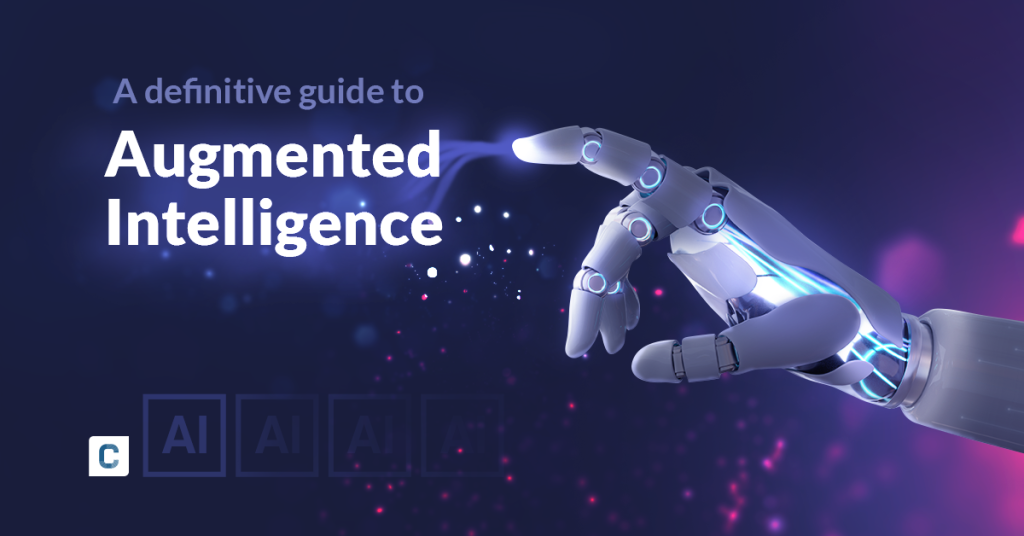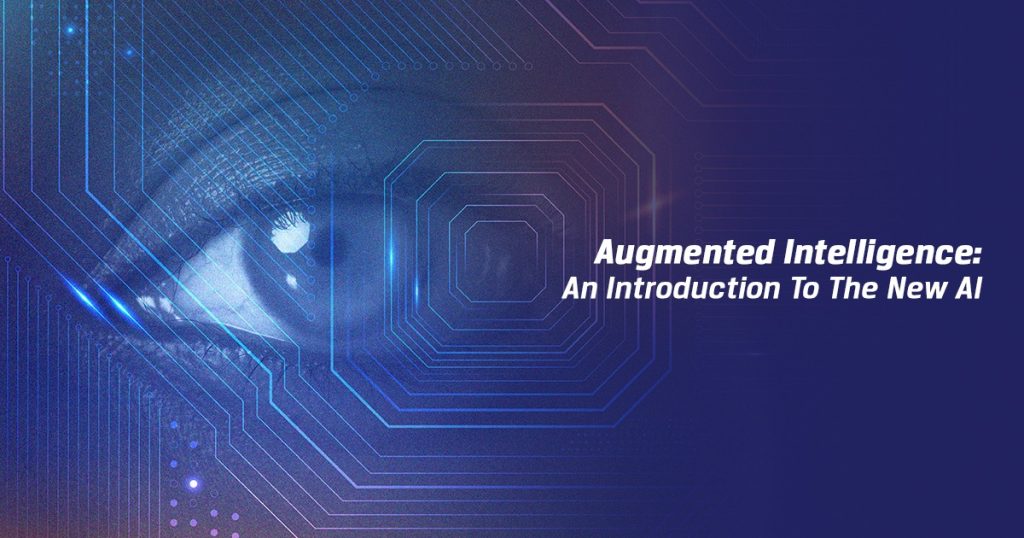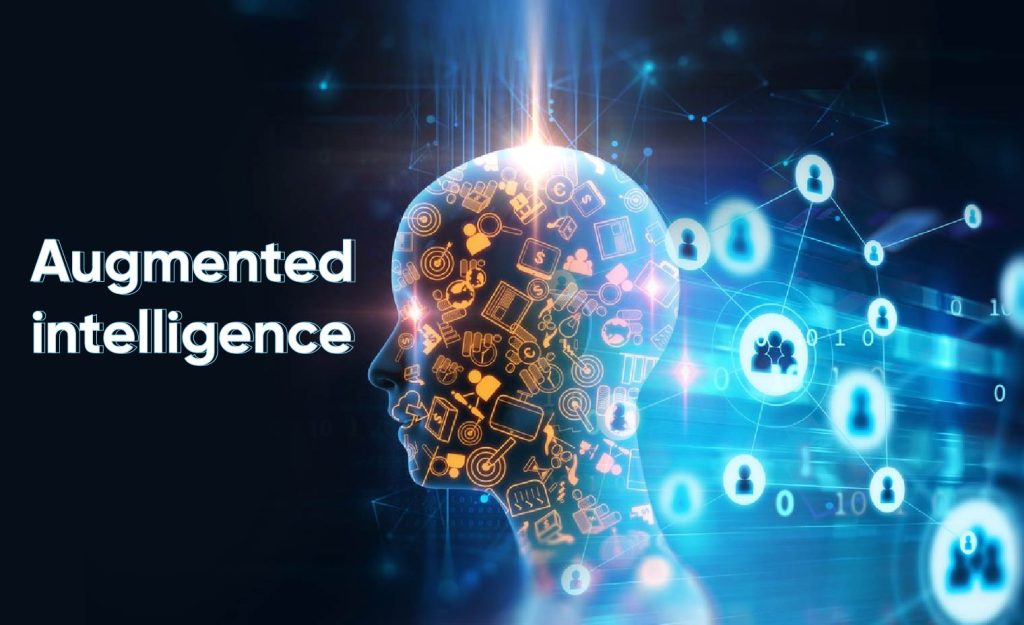In recent years, the field of artificial intelligence (AI) has gained tremendous attention and has revolutionized various industries and aspects of our daily lives. However, there is another term that has emerged in this space – augmented intelligence (AI). While it may sound similar to AI, there are significant differences between the two. In this article, we will dive deeper into what augmented intelligence is, how it differs from AI, its applications, benefits, challenges, and more. So, let’s get started!
Augmented Intelligence: A Summary
Definition
Augmented Intelligence (AI) uses technology to enhance human capabilities, improving task performance, analysis, and decision-making. It augments, rather than replaces, human intelligence. This means that while AI systems can perform tasks on their own, augmented intelligence focuses on working alongside humans to improve their performance.
This term was first coined by researchers from Stanford University in 2017, who argued that the future of artificial intelligence lies not in replacing humans but in enhancing them. It is based on the premise that humans and machines working together can achieve better results than either of them working alone.

The definition of the Augmented Intelligence
Difference between AI and Augmented Intelligence
While both AI and augmented intelligence involve technology and human intelligence, they have significant differences when it comes to their purpose and approach.
- AI is designed to operate autonomously, while augmented intelligence works alongside humans.
- AI focuses on automation, while augmented intelligence analyzes data and provides insights to humans for decision-making.
- AI aims to replace humans in performing tasks, whereas augmented intelligence augments human capabilities to improve task performance.
Augmented Intelligence vs. AI in Business
The use of AI in business has been steadily growing with varying levels of autonomy, ranging from human-only tasks to fully automated systems. On the other hand, augmented intelligence resides in the middle stages, assisting humans with tasks and providing recommendations for decision-making.
One example of this is in customer service. While AI-powered chatbots can handle basic inquiries, this technology can assist customer service representatives by analyzing data and providing suggestions for personalized and effective solutions.
The collaboration between humans and machines can lead to improved efficiency, accuracy, and cost savings for businesses. It also allows employees to focus on more complex and creative tasks instead of mundane and repetitive ones.
Benefits of Augmented Intelligence
Reduces Task Completion Time
One of the most significant benefits of augmented intelligence is its ability to reduce task completion time. By analyzing data and providing recommendations, it can help humans make faster and more informed decisions. This is especially useful in industries such as finance, healthcare, and manufacturing, where time is of the essence.
For example, in the healthcare industry, this technology can analyze a patient’s medical history, symptoms, and test results to assist doctors in making a quick and accurate diagnosis.
Improves Analysis and Decision-making
Augmented intelligence can analyze large volumes of data at lightning-fast speed, which is beyond human capability. By doing so, it can identify patterns and correlations that humans may miss, leading to more precise analysis and decision-making.
For instance, in the finance industry, this approach can analyze market trends, customer behavior, and risk factors to provide investment recommendations to financial advisors.
Accelerates Application Development
Augmented intelligence can also accelerate application development by automating mundane tasks such as coding, testing, and debugging. This allows developers to focus on more complex and creative aspects of application development, leading to faster delivery of high-quality products.
Generates Suggestions for Complex Processes
In industries such as manufacturing and supply chain management, there are numerous complex processes involved. Augmented intelligence can analyze data from sensors and other devices to generate suggestions for optimizing these processes. This can result in increased efficiency, cost savings, and improved overall performance.
Provides Concise Information Summaries
In today’s fast-paced business environment, executives and decision-makers need concise and accurate information to make informed decisions quickly. Augmented intelligence can analyze data from various sources and provide summaries, reducing the time and effort required to sift through vast amounts of data manually.

The advantages of the augmented intelligence
Challenges of Augmented Intelligence
While it offers many benefits, there are also some challenges that need to be addressed.
May Decrease Human Motivation to Learn Basic Skills
As augmented intelligence takes over mundane tasks, there is a concern that it may lead to a decrease in human motivation to learn basic skills and perform routine tasks. This could potentially result in a skills gap, where humans may become too reliant on machines and lose their ability to perform basic tasks.
Creates New Challenges in User Experience Design
With the increasing use of augmented intelligence, user experience design is becoming more challenging. Designers need to ensure that the interaction between humans and machines is seamless, intuitive, and user-friendly. This involves understanding human behavior and preferences and incorporating them into the design process.
Raises Concerns about Security and Risk Management
The use of this technology also raises concerns about security and risk management. As machines are becoming more integrated into business processes, there is a risk of data breaches and malicious attacks. Companies must develop robust security measures and protocols to protect sensitive information and prevent unauthorized access to systems.

Drawbacks of augmented intelligence
Applications of Augmented Intelligence
Self-driving Cars
One of the most well-known applications of this technology is in self-driving cars. Tesla’s self-driving cars utilize augmented intelligence, where the car can operate autonomously, but human intervention is still required in emergencies.
This approach enables the car to analyze real-time data from sensors, cameras, and other devices to make decisions while driving. This has the potential to improve road safety and reduce accidents caused by human error.
Retail Analytics
Retail businesses can also benefit greatly from this technology. By analyzing customer data from various sources such as loyalty programs, social media, and purchase history, retailers can gain insights into customer behavior and preferences.
These insights can be used to improve product displays, customer service, and targeted marketing campaigns, leading to increased sales, customer satisfaction, and brand loyalty.
Conclusion
Augmented intelligence offers a promising future where humans and machines work together to achieve better results. It is not about replacing humans with machines but about using technology to enhance human capabilities. The collaboration between humans and machines can lead to improved efficiency, accuracy, and cost savings for businesses, as well as better experiences for consumers.
However, it is essential to address the challenges and concerns associated with the use of this approach to ensure its successful integration into various industries. With proper ethical considerations and responsible implementation, it has the potential to revolutionize many aspects of our lives and pave the way for a more efficient and intelligent future.


